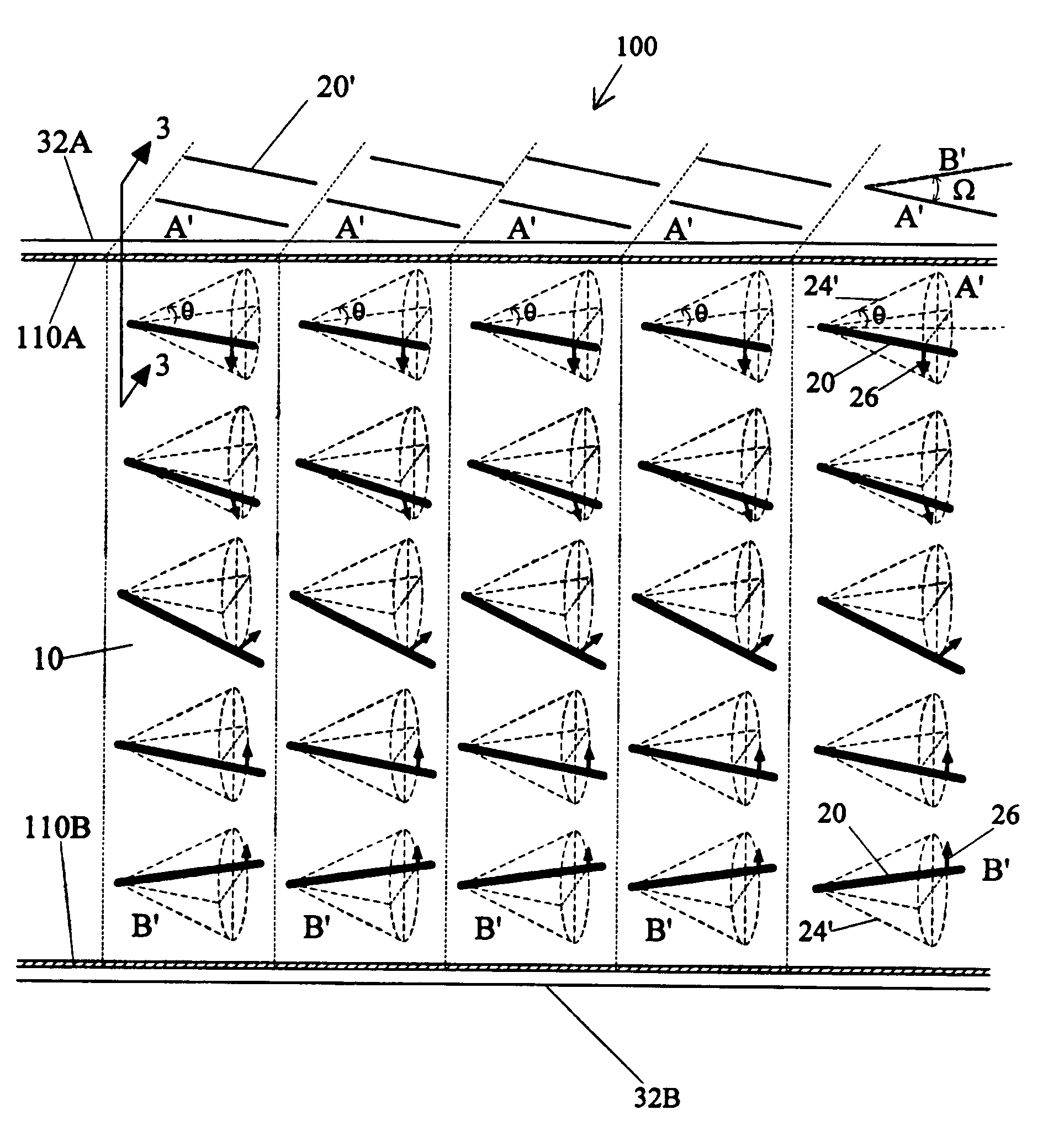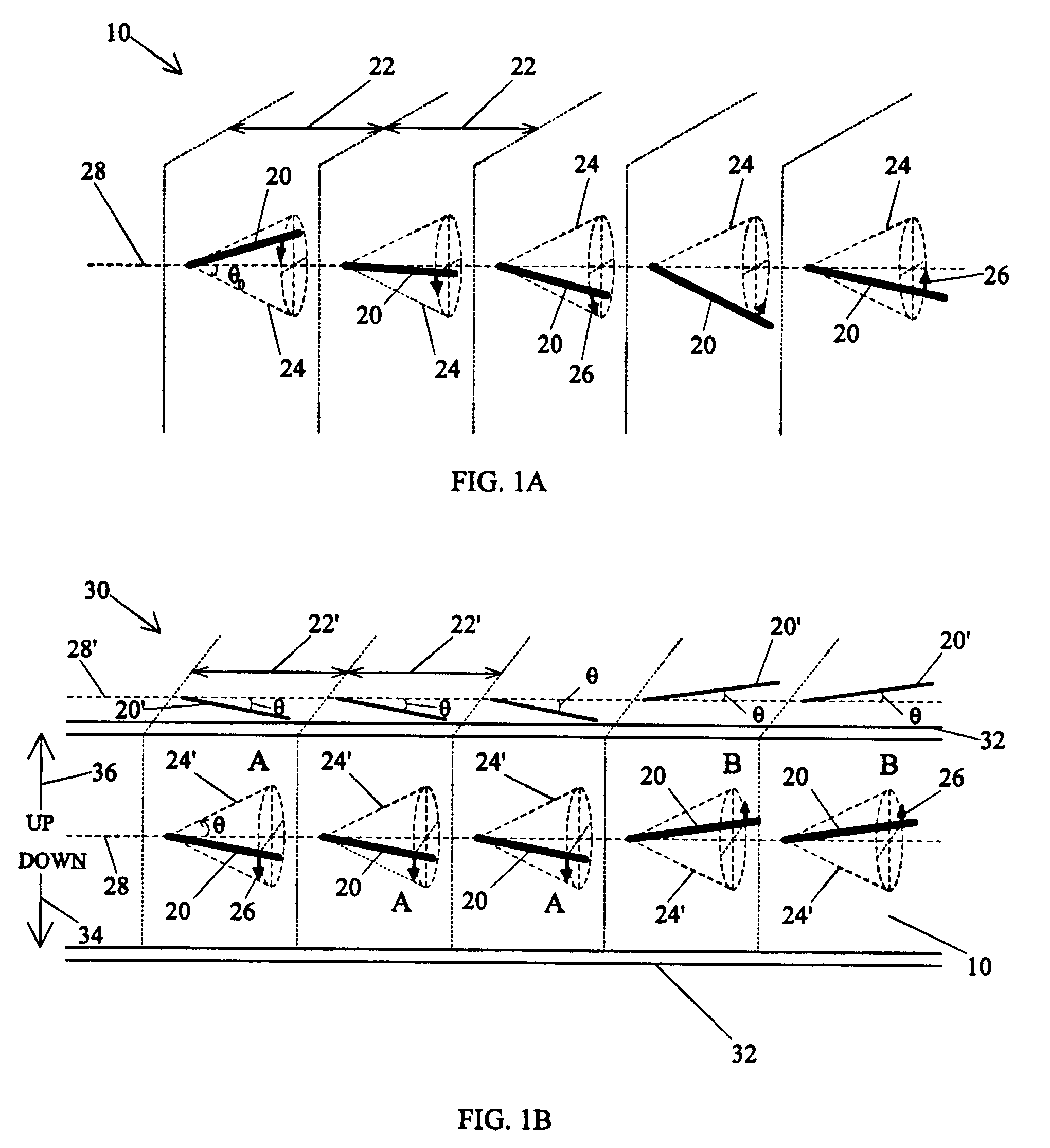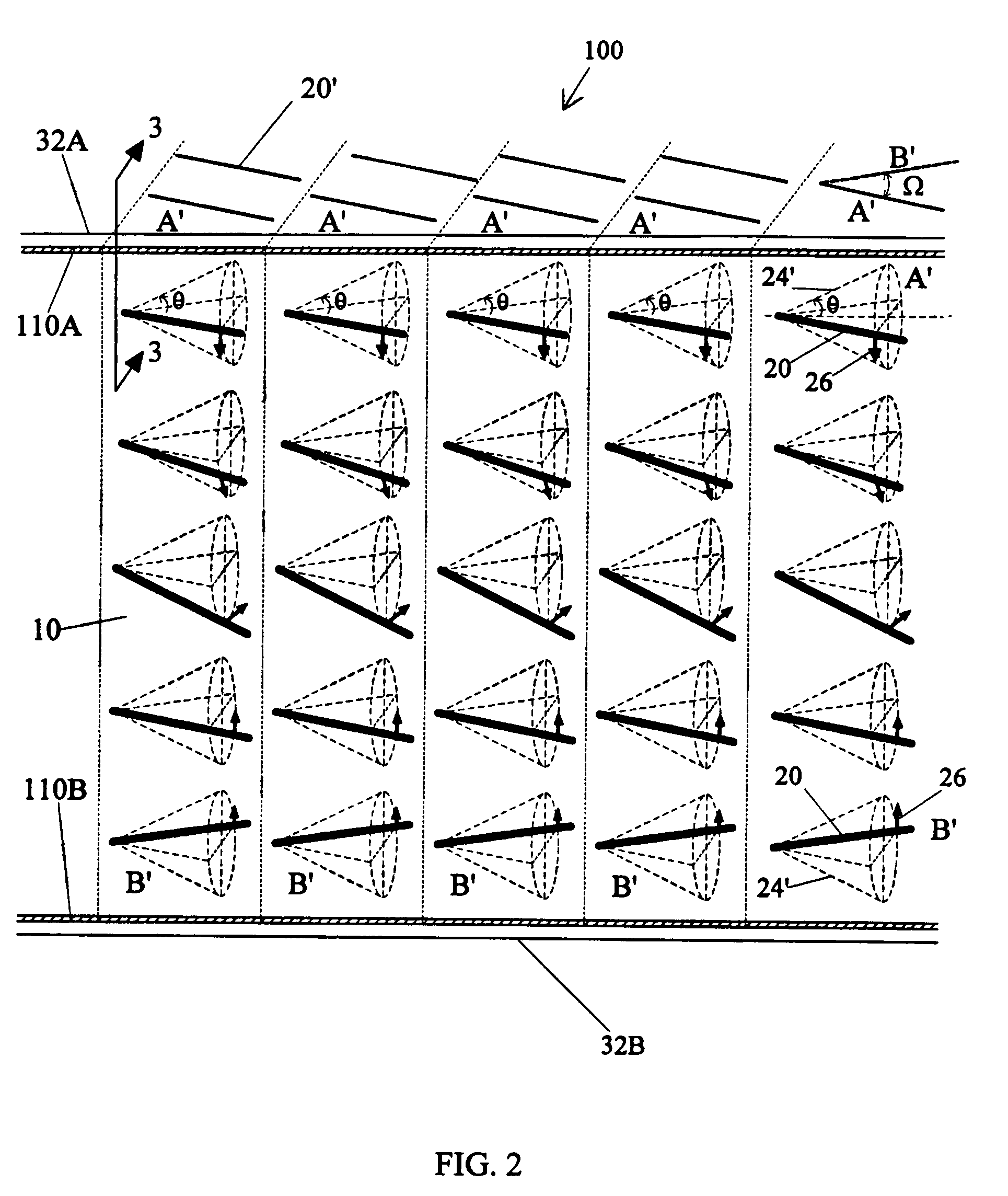Chevron-free FLC device
- Summary
- Abstract
- Description
- Claims
- Application Information
AI Technical Summary
Benefits of technology
Problems solved by technology
Method used
Image
Examples
Embodiment Construction
[0024]Attention is now directed to FIG. 2, which illustrates one embodiment of an FLC device, generally indicated by the reference number 100. FLC device 100 includes FLC material 10 confined between a top substrate 32A and a bottom substrate 32B. FLC device 100 also includes an alignment treatment 110A on the inner surface of top substrate 32A and an alignment treatment 110B on the inner surface of bottom substrate 32B. Alignment treatment 110A is designed to induce a predetermined molecular alignment of the portion of the FLC molecules which are located near the top substrate. Alignment treatment 110B is designed to induce a different, predetermined molecular alignment of the portion of the FLC molecules which are located near the bottom substrate. Alignment treatment 110A induces a molecular alignment such that the projection onto top substrate 32A of the director of an FLC molecule located immediately adjacent to top substrate 32A is oriented in a direction A′ as shown in FIG. 2...
PUM
| Property | Measurement | Unit |
|---|---|---|
| Angle | aaaaa | aaaaa |
| Angle | aaaaa | aaaaa |
| Cell angle | aaaaa | aaaaa |
Abstract
Description
Claims
Application Information
 Login to View More
Login to View More - Generate Ideas
- Intellectual Property
- Life Sciences
- Materials
- Tech Scout
- Unparalleled Data Quality
- Higher Quality Content
- 60% Fewer Hallucinations
Browse by: Latest US Patents, China's latest patents, Technical Efficacy Thesaurus, Application Domain, Technology Topic, Popular Technical Reports.
© 2025 PatSnap. All rights reserved.Legal|Privacy policy|Modern Slavery Act Transparency Statement|Sitemap|About US| Contact US: help@patsnap.com



